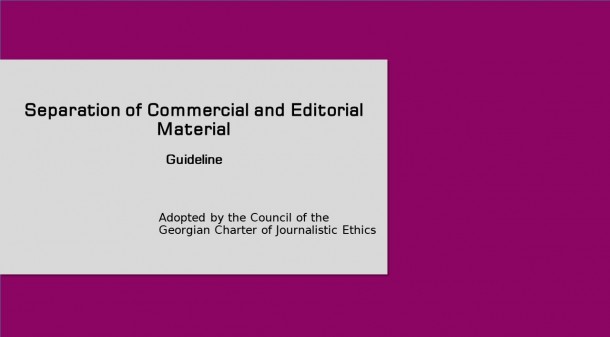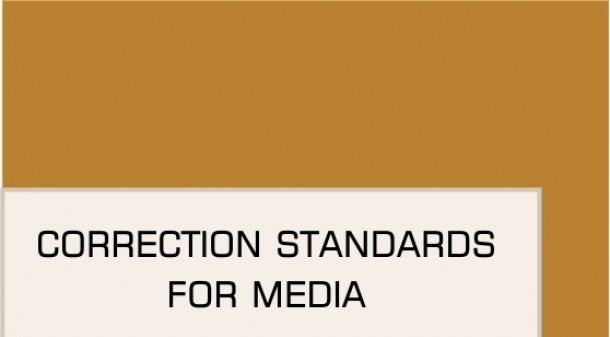Maintaining balance between releasing personal details in case of public interest and protecting privacy is a challenge and responsibility of media.
1. Public
interest
Violation of privacy by a journalist is approved only in case of public interest existing in the topic, when the released material can bring more good to the society than bring the damage to one person. This is the difference between public interest and public curiosity. Public interest exists about the topics including:
- Systemic crime of the government
- Improper expenditure of public money
- Crime committed by officials
- Public healthcare
- Environment
- National security
- Uncovering important crime, etc.
- A person agreed to make the information public;
- The reason why the personal information was made public is detailed.
1.1. Agreement
- Reporting about personal details is agreeable when the person gave his permission to do so. Be sure, that the respondent is aware of what he is agreeing on. If there are several people in the material, get the permission from all of them. In other case, specify which ones did not give you an agreement;
- People in public space should not have an expectancy that their life will be as protected as in their own home or in their property, but in public spaces there are cases when the privacy can be protected. For example, if a person had health problems in public space;
- When talking about antisocial behavior, illness or any other negative context material, you cannot use close-up, accidental photos of a person taken in public space. The responsibility is higher in places such as hospitals, schools, prisons, emergencies… in this case you need double agreement – one from the institution and the second from the respondent, other persons in the place. Agreement is not necessary if you don’t identify the people.
- Video recording can be made without agreement in semi-public places, but the owner can ask you to stop the recording. Semi-public places are for example shopping centers, airports, places which belong to a private person, but are open for the society. Minors younger than 16 have higher privacy protection. Information about them needs to be approved by their guardian. Children who became interest figures by their actions, for example are singers, sportsmen, winners in a competition, are also protected. You cannot take an interview with them in public space without their guardian’s permission. For more information see the guidelines about reporting on children’s issues.
- A journalist needs to be careful using the information depicting personal life which was published on social media. In this case, it’s better to get the agreement from the one who posted it; for more, see the guidelines on using social media
1.2. Argumentation
If there is no agreement from the person, think about these:
- What and who are you uncovering with this material?
- How will this information support the discussion important to society?
- Can you show the problem fully without these details? What additional information does the material give?
- What damage will a person take by publication of his personal information?
- Is the public interest satisfaction worth the damage done to the person?
- What alternate ways are there to report the issue?
2. Secret video/audio
recording
Secret recording is:
- Recording with hidden recorder, camera;
- Recording with any equipment (camera, mobile phone, etc.) when the person is not aware of this;
- Recording phone calls with the aim of publishing it without respondent’s agreement;
- Starting or continuing recording when the respondent thinks that it has not begun yet or it is already finished.
- Hidden recording with the aim of getting information is possible, but must be published only when the media proves that here was no open way of getting this information and they had to show it;
- Entering private property and hidden recording can be used in high public interest situations and this must be proven;
- Hidden recordings for entertainment and comedic shows can be released when the participants are informed; be careful when using other people’s recording, recordings of observation cameras, operative materials.
3. Public and
private figures
- Public figure for media has a wider definition and includes everyone who has a function for public life in any field, for example politics, economy, culture, sports… public figures, especially politicians, high level officials (government workers), should have lower expectancy of privacy. But to some degree they also have the right to protect their personal life from other people. For example, their relationships, their health is private, if it does not attract public interest, which can be in case of improper use of public money for private relationships and treatment, etc.
- Interest in public figures’ life does not automatically mean that their family members, especially minors, have to be reported on as much. Their personal lives are more protected than that of their parents’.
4. Sensitive issues of
private life
There are issues which can be more sensitive, as there is higher risk of improper violation of privacy. These issues include topics such as health, sexual life, adoption, surrogacy.
4.1. Health
- Information about health and sexual life has higher protection than others. Reporting these is always a privacy violation. Therefore, there needs to be especially high public interest and the reporter should get through either of two steps – person’s agreement or argumentation;
- The health topic reporting can also damage other people, because it creates distrust and they might abstain from getting treatment.
4.2. Accidents, crime
- It is vital to maintain balance between public interest and reporting on details about people who were in accidents. Showing close-ups of people who are injured, suffering, and in shock is approved when this shows the scale of happened tragedy, is needed for showing context and fully covering the issue. While working live, the media has to try not to focus on suffering of specific people.
- Media has to think about whether the repeated showing of horrific image will cause re-traumatization. Try to minimize re-traumatization of close people to the deceased and survivors. It is necessary to get the permission to record funerals of private figures.
- Media needs to refrain from releasing the information from the private life of victims, accused and other people involved in the case, that does not relate to the case;
- Journalists can stay near the home of accused as long as they wish, in the public place, for example the road, and not at the front door, whether the accused is a public figure or not; For more, see the “Guideline of reporting on crime”
- It is not advisable to show photo/video materials which depict difficult emotional state of people in the courtroom.






